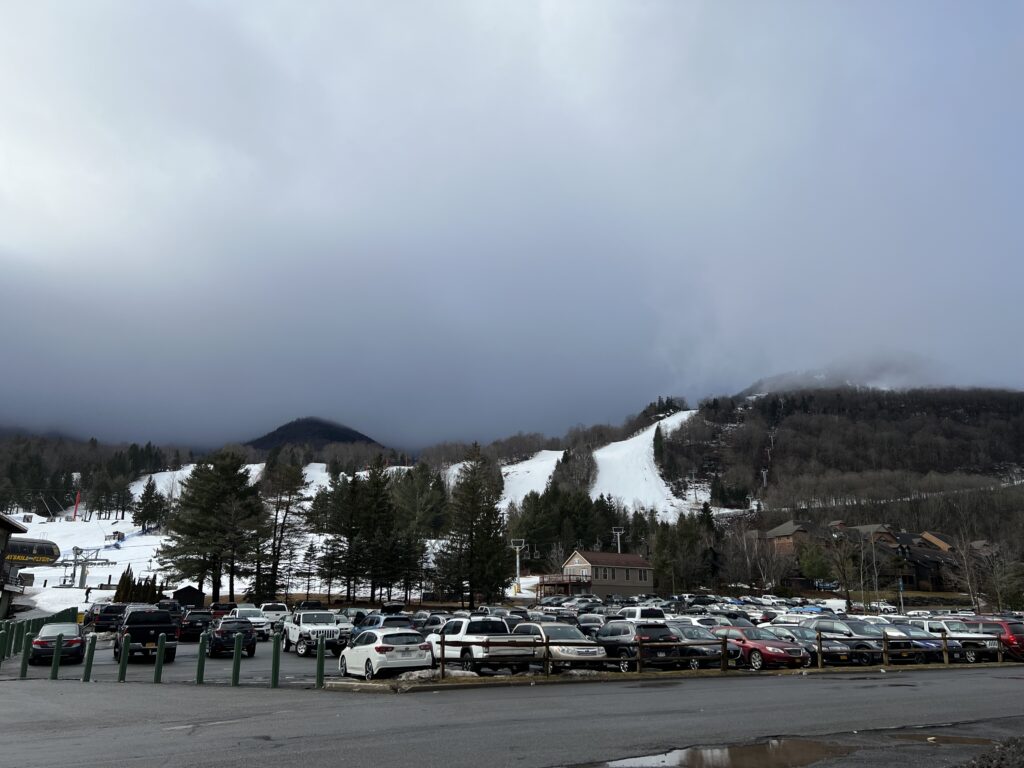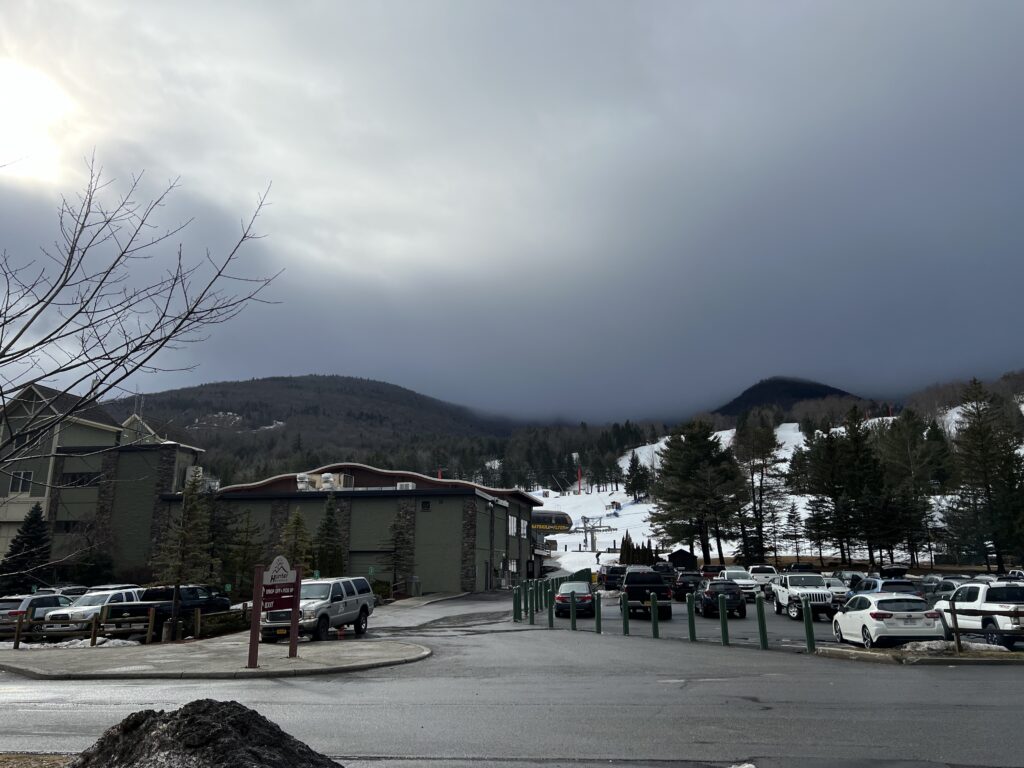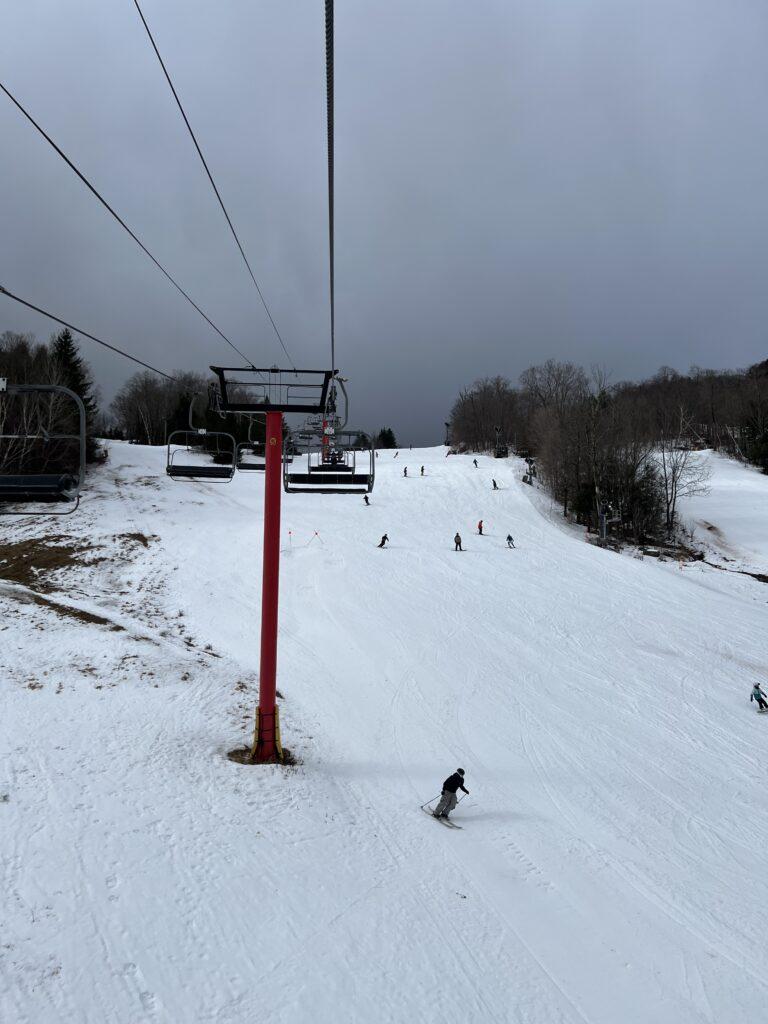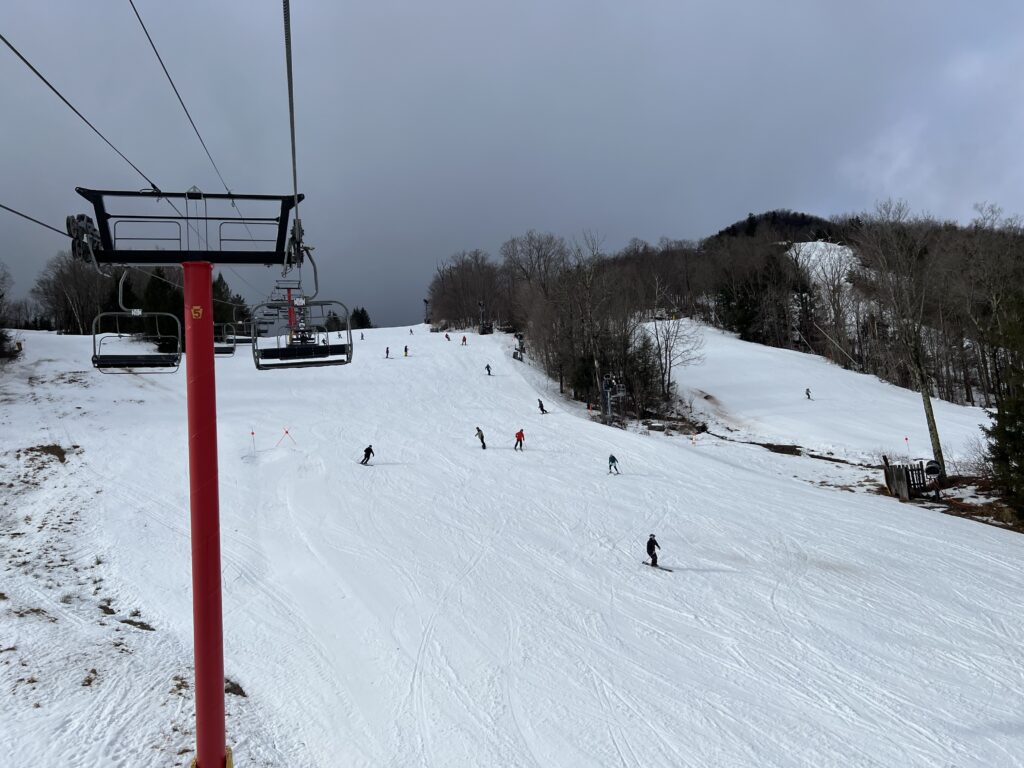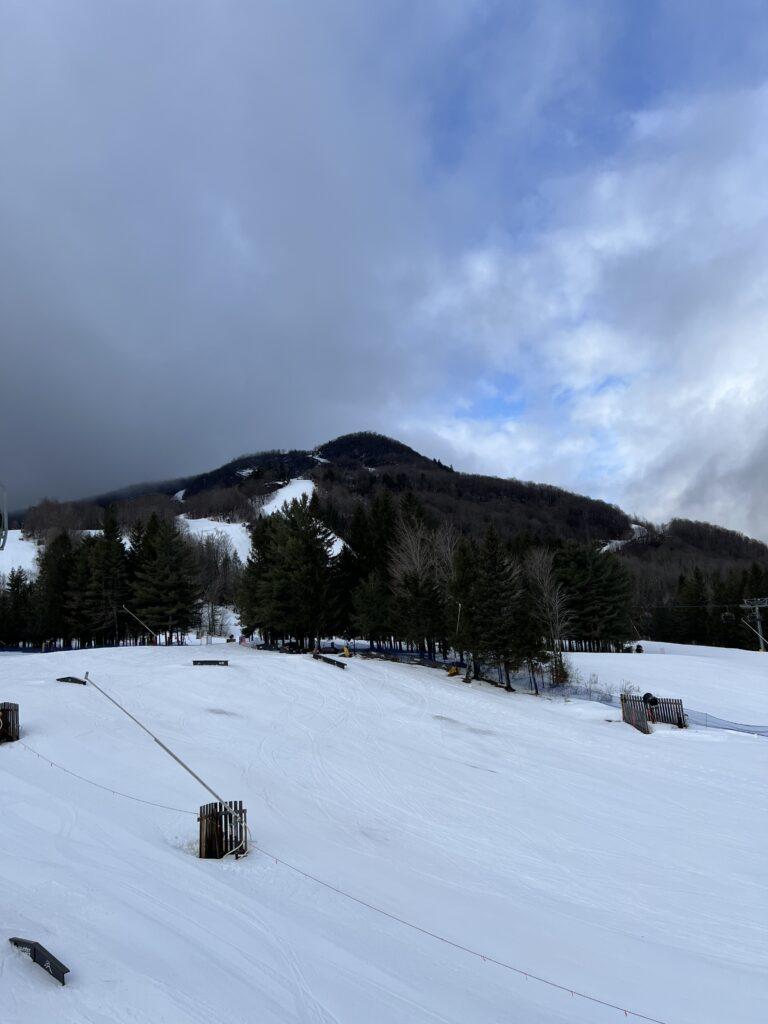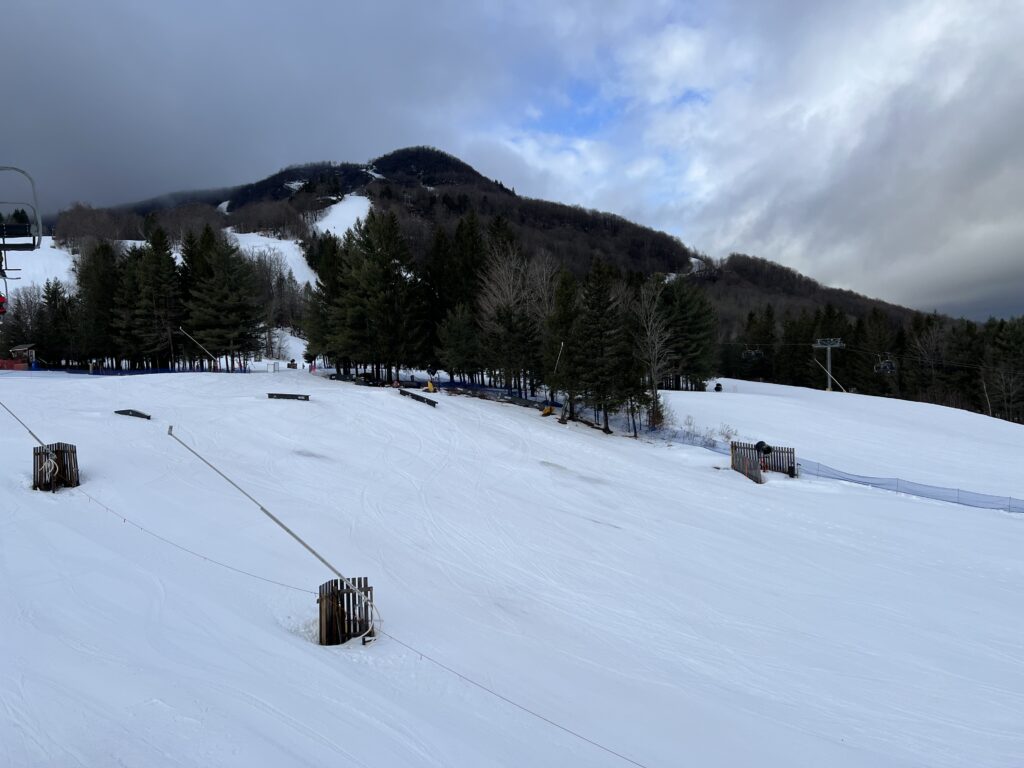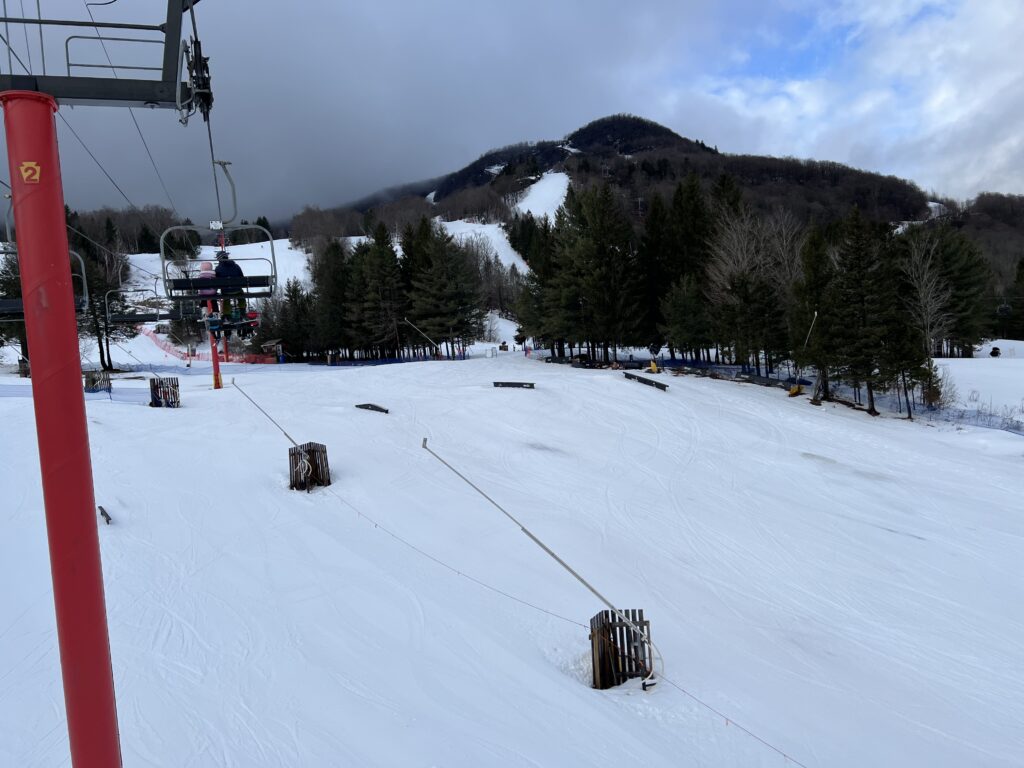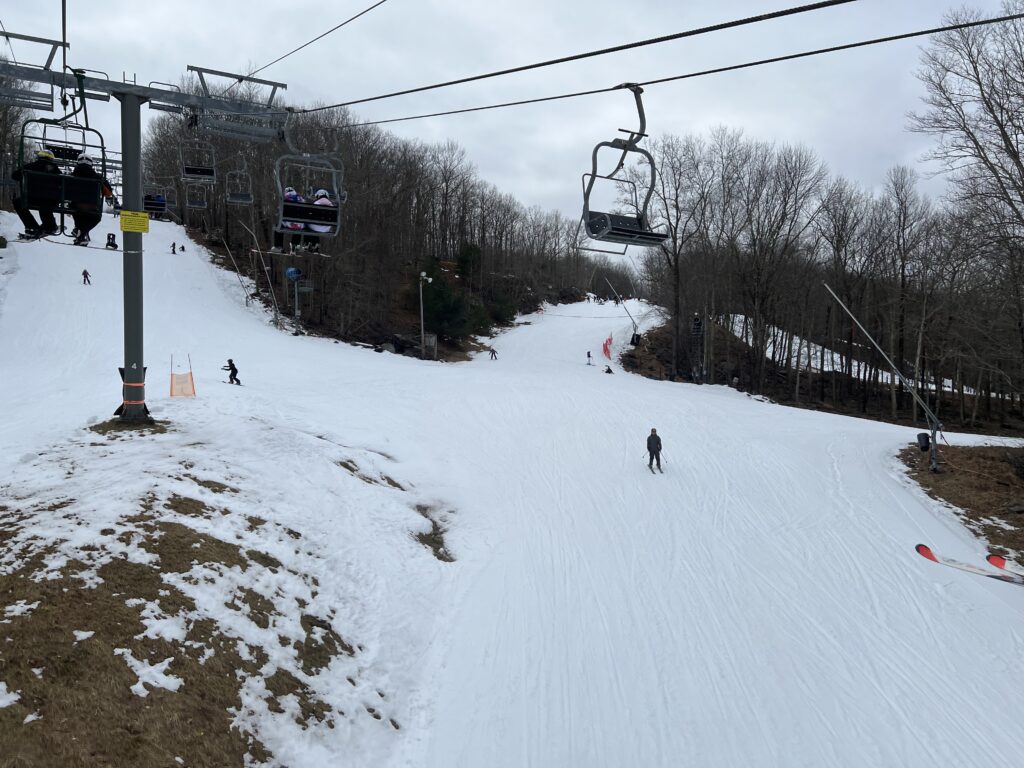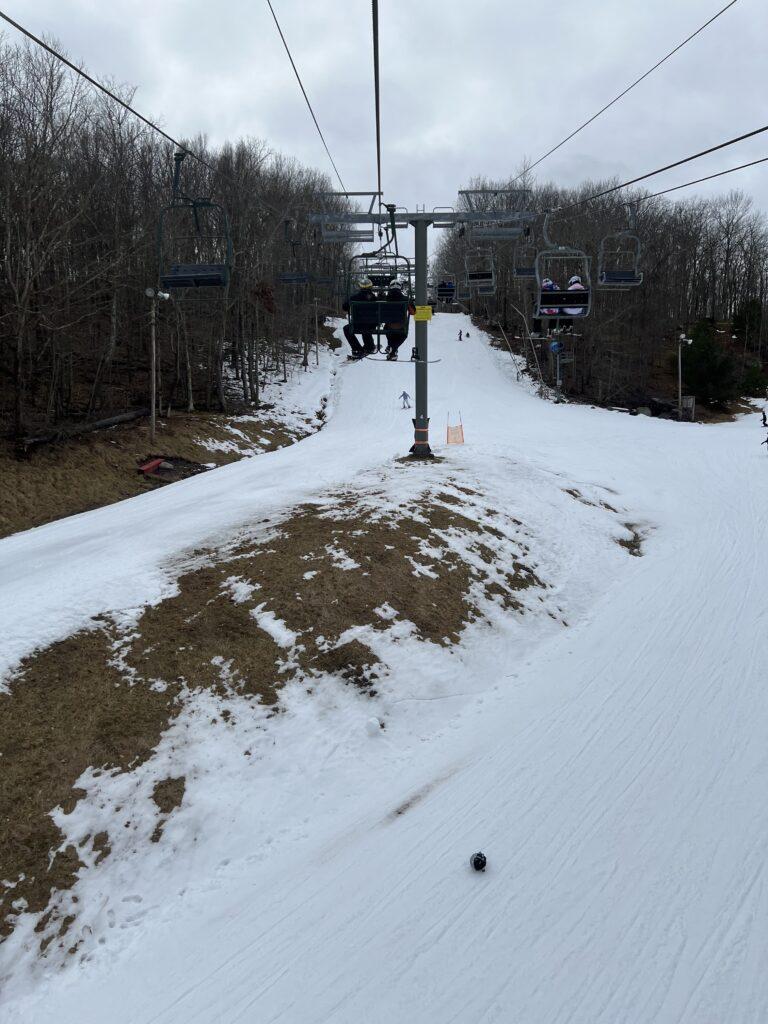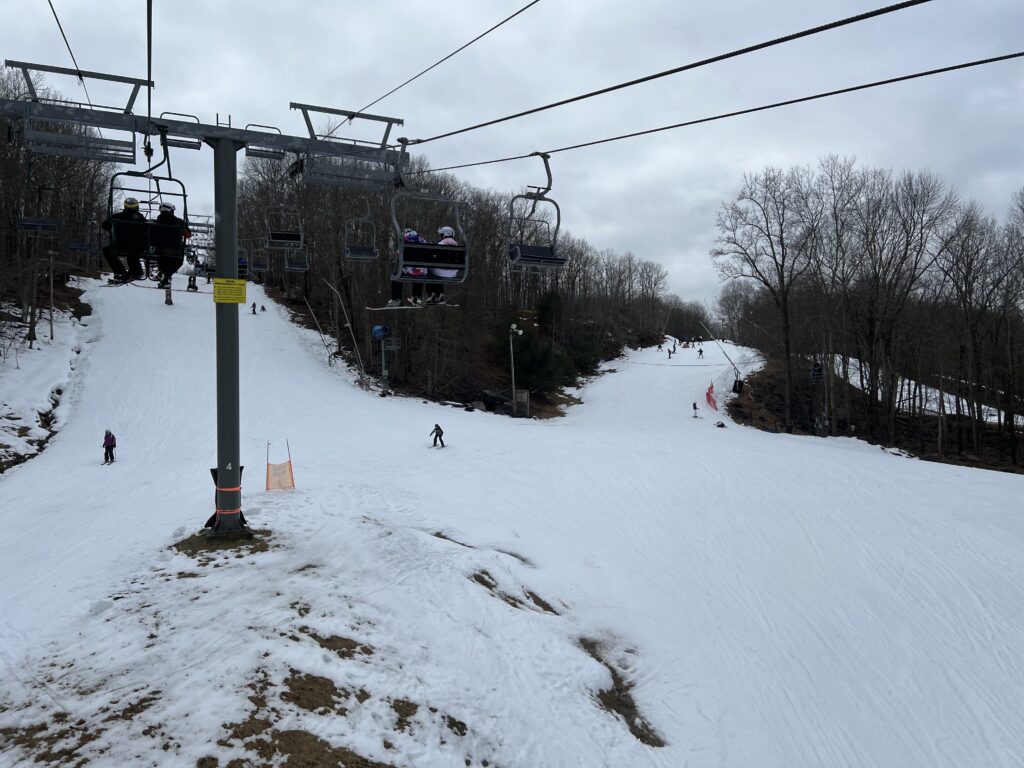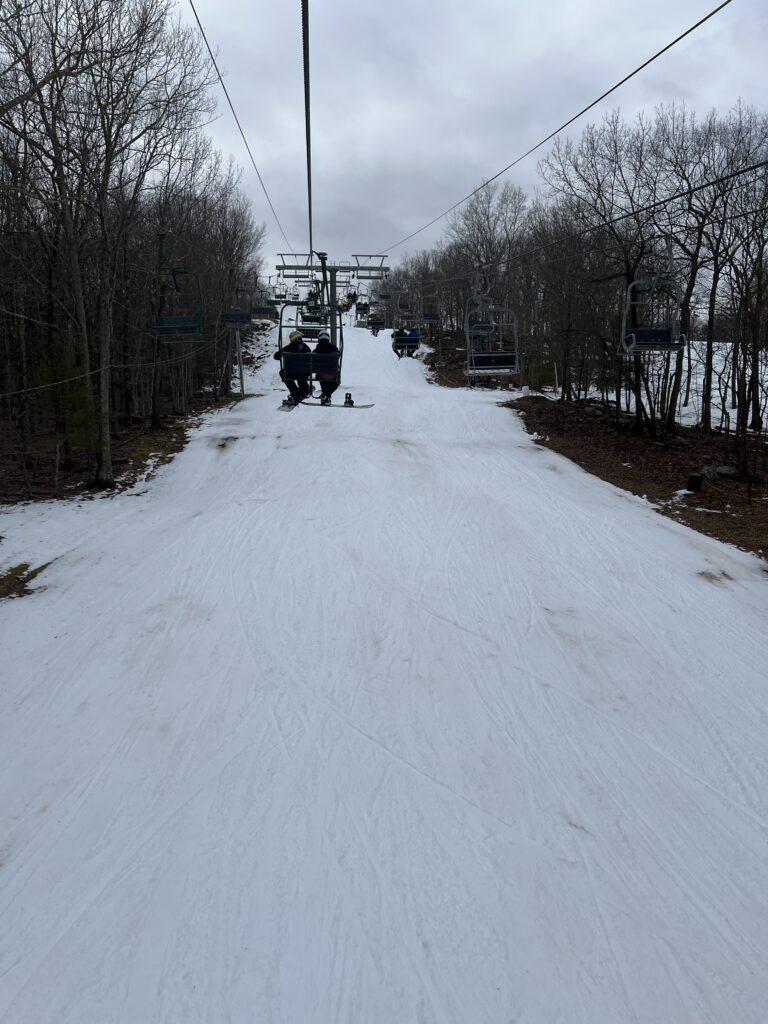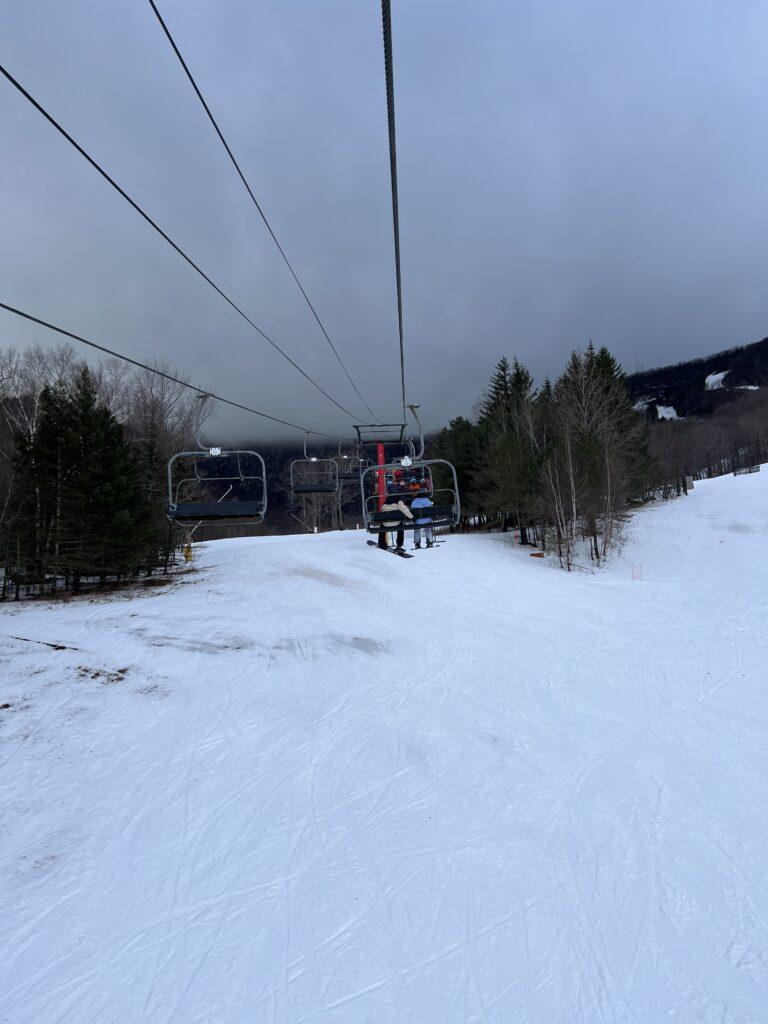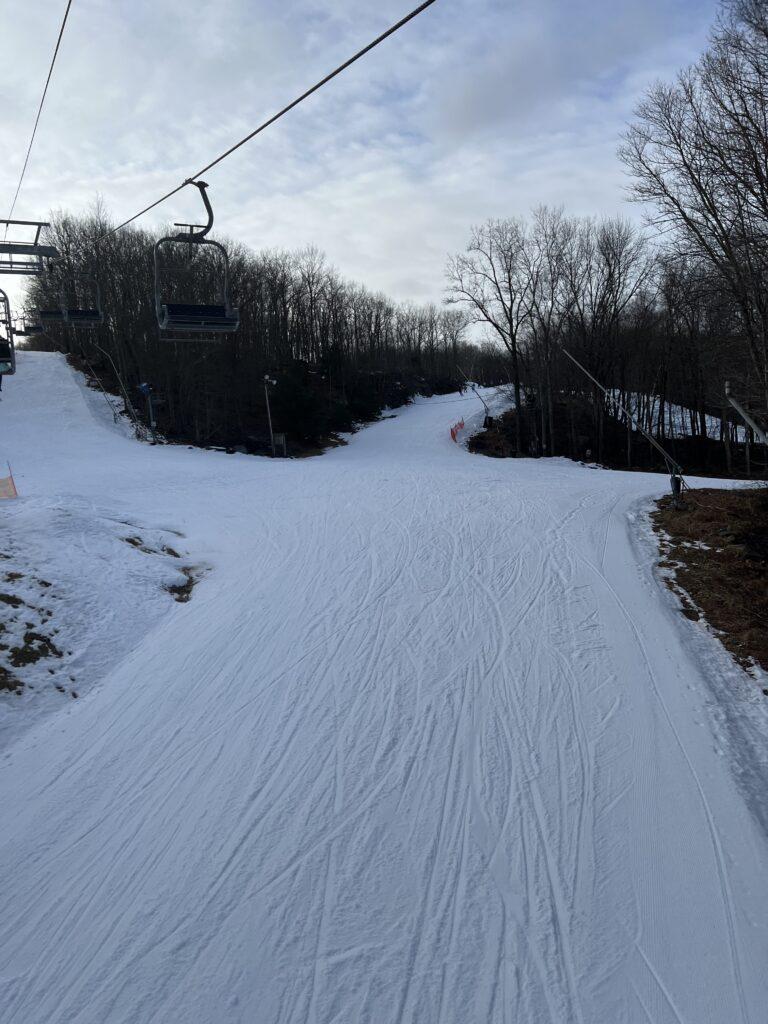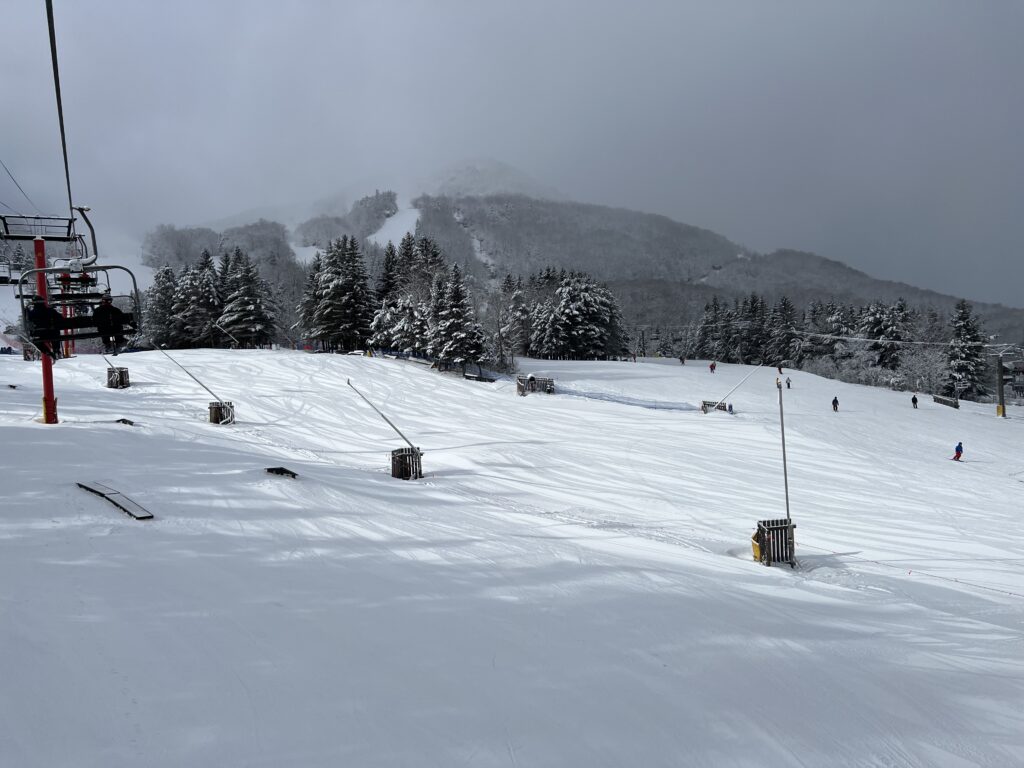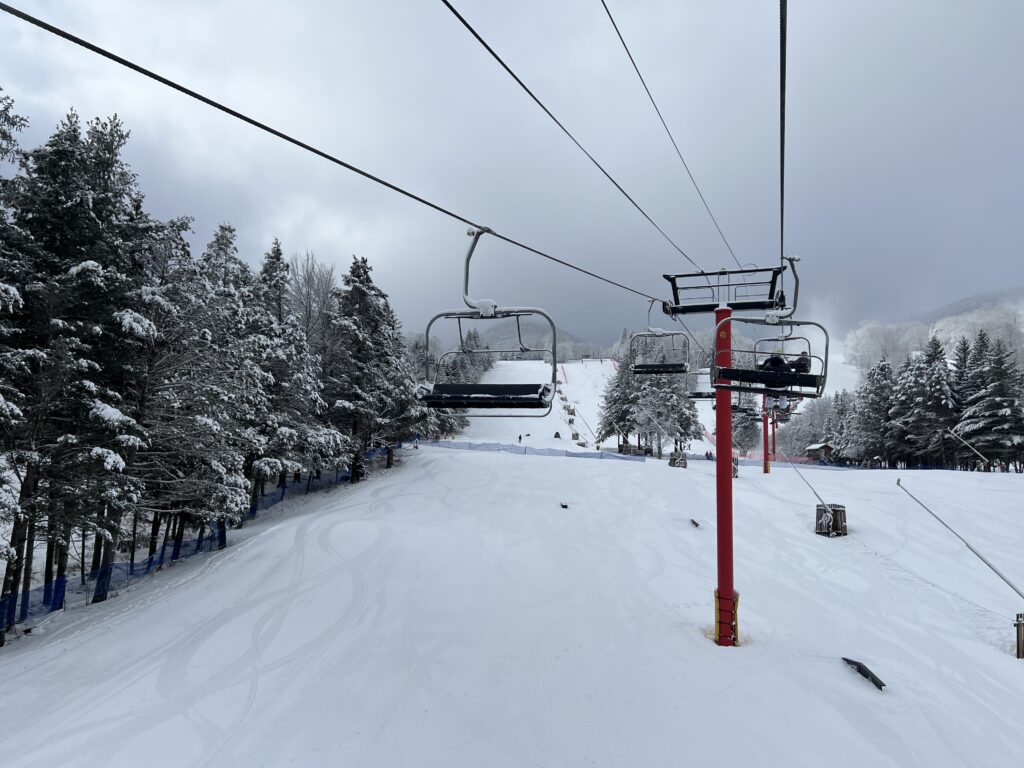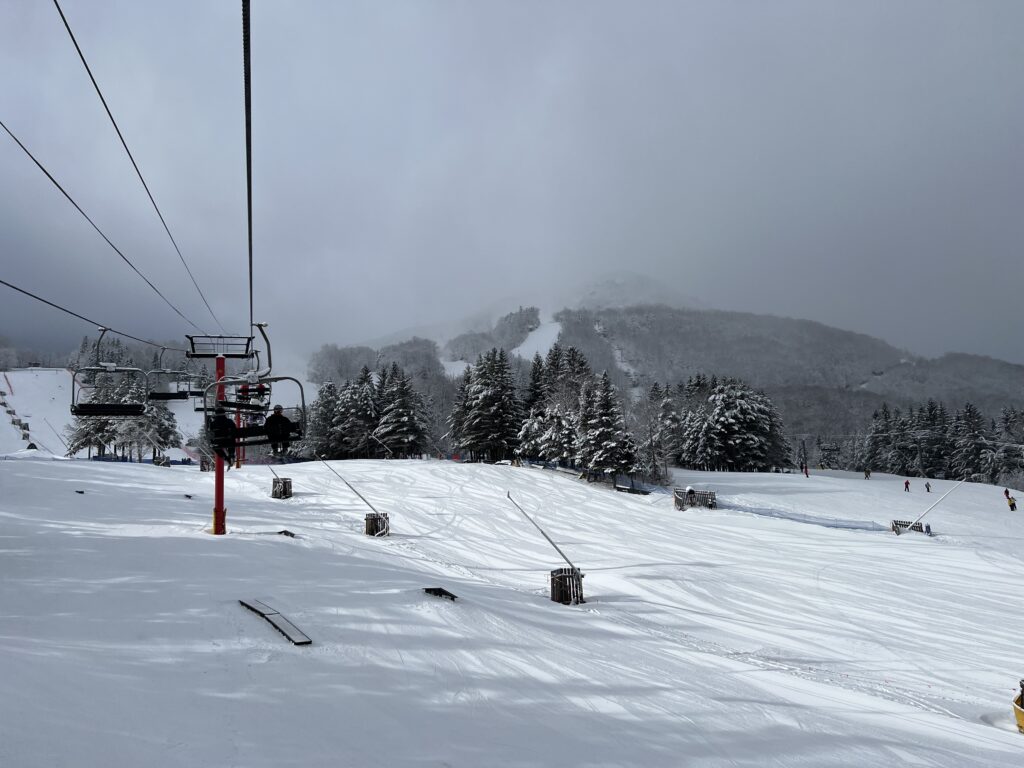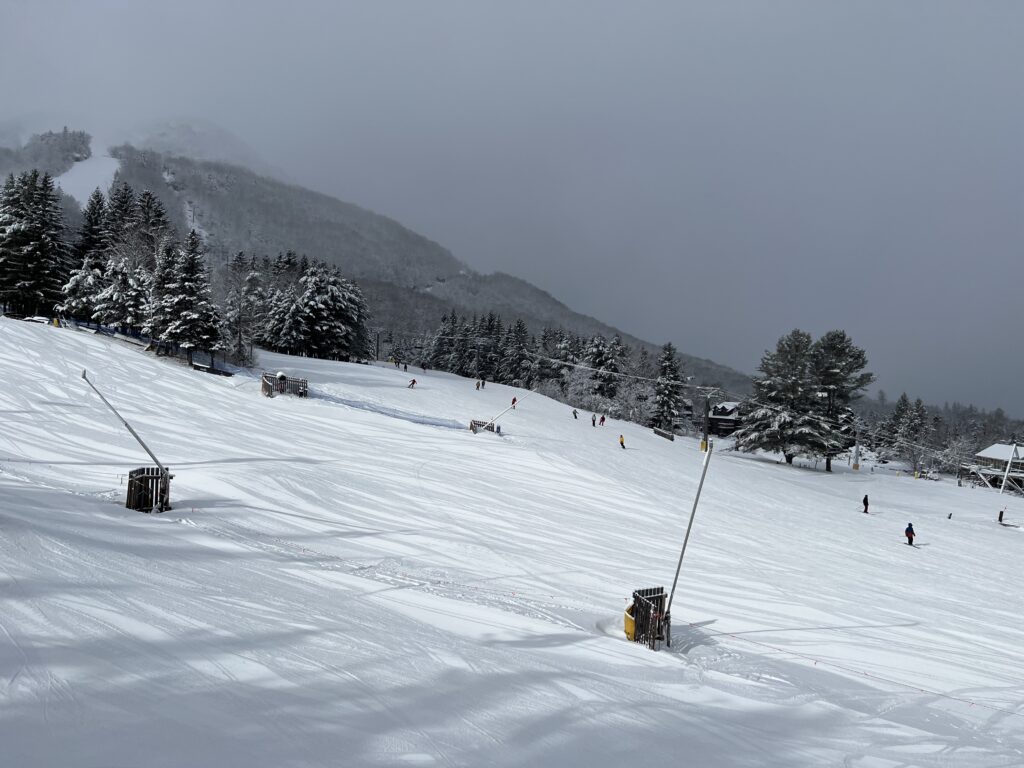by Albert Neubert
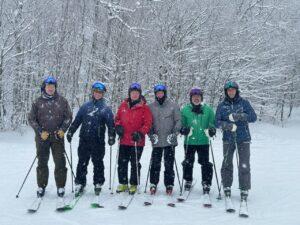
It was a mixed bag of rain, sleet, and heavy wet snow for the local ski areas this past weekend. The thaw last week created spring conditions on Friday and Saturday and then the storm that rolled in on Sunday was rain for the lower elevation resorts and wet snow at the higher elevations that turned out to be one of the bigger dumps of the season in the Catskills. Hunter, The Windham Mountain Club, Belleayre, and Plattekill reported up to almost a foot by Monday morning.
Fortunately, all of the day trip ski areas survived the latest warmup and wet weather relatively unscathed. Any areas of thin coverage did get quickly exposed and you could tell which ski area operators laid down enough manmade snow during the eight day cold stretch so that there was no evidence of weak coverage. I suspect that as we head into the last couple of months of the season, ski area management will not focus on expanding terrain and instead concentrate on their existing trails and trying to keep surface conditions as good as they can given the seemingly mild and wet winter we have experiencing throughout the Northeast. Unless there is a really big dump of natural snow what you see in terms of trail count is likely what you’ll get for the remainder of the season.
Ski area operators generate the vast majority of their revenue from three holiday periods during the season with the Christmas holiday week accounting for up to 50% of total season revenues. The Martin Luther King Holiday weekend is the next most important followed by the President’s day and week holiday period. The Christmas week holiday was a wipeout with warm temps, rain and fog and that resulted in attendance at less than half of what is usually experienced. The MLK weekend had very good attendance but was still down from an optimal holiday turnout. This has put a lot of pressure on operators to be mindful of expenses and with only one holiday period left they have only one shot at recovering some of their lost revenue for this season.
I skied at Hunter, in the northern Catskills, last Friday, after a rainy Thursday night. Temps were in the low 30s when I got there and climbed into the 40s by mid-day. The upper mountain was in the clouds so I stayed on the lower third of the ski area. Hunter’s coverage was incredible and there were no signs of the any damage from the warmth and rain. It looked like there was anywhere from five to eight feet of snow at the base in front of the main lodge.
Amazingly, there was a decent turnout but with almost all lifts spinning, there was no wait on any chair. Surface conditions were like what you would find in early spring with heavy, wet and loose snow and it was not easy to push around. Even easier trails required a lot of effort and I saw lower level skiers that were essentially wedge or “snowplow” skiers struggling and getting turned around and flopping. A couple hours playing around in the heavy stuff was enough for me. I enjoyed it but felt it in my legs and called it quits when I knew I was getting fatigued.
On Saturday, I headed southeast to Lackawaxen, Pennsylvania, and home of Ski Big Bear at Masthope. Ski Big Bear became a member of the Indy Pass family this season. The Indy (or independent) ski pass is one of the best deals in the ski industry, providing two visits to each participating resort during the season. What’s really cool is that these ski areas typically do not get big crowds, even on weekends, and you can have a great experience on uncrowded slopes.
That was the case for me as I never waited on a lift lines and skied non-stop for almost three hours on a peak season Saturday. Conditions were just like at Hunter the previous day with temps in the mid-40s. Coverage was terrific and Big Bear featured 15 of their 18 slopes and had three of their four chairs running along with carpet lifts for beginners. Big Bear has over a 600 foot vertical with a lot of nice novice and intermediate terrain and a few short expert pitches. The ski area is “upside, down” in that the base lodge is at the summit and you ski down toward the Delaware River which winds its way past the bottom of the trail network. The lodge is one of the better base facilities I’ve come across, more like what you would find at a much bigger mega resort. It’s spacious inside and very “user friendly.”
With some of the recent heavy and wet snowfalls in the Catskills I tend to caution skiers and snowboarders to not think “powder” and instead be prepared for what I call lumpy, bumpy and clumpy conditions. That’s what happens when you get a large turnout and the new snow gets chewed up and pushed around, forming small bumps or moguls. That’s when I turned to Nick Pera, my “go-to” pro for some tips on skiing in these conditions. Pera is a Level III certified PSIA instructor at the Windham Mountain Club.
He has a season long men’s group every Saturday and Sunday morning at Windham. There are six men in his group and they like to ski hard for their morning session. After one of the recent storms that dumped over a half a foot of dense snow, the group headed over to the East Peak section of the resort, which had just opened and with some ungroomed “whales” and conditions were “amazing,” according to Pera.
About half way down one of the trails, Pera noticed how they were laboring in the bumps. At the bottom the group was exhausted, huffing and puffing, but remarking how good the snow surface was. It’s been a couple of years that the moguls were this good and after a second top-to-bottom run, the results were the same. Pera said that clearly, they were not in “bump shape.” Pera observed that the group was taking too much air, skiing the bumps too directly and not finding a good line through the bumps.
Pera took the group for a third run down the same trail and had them slow down. He said that their tactics needed to change because the bumps were “winning,” beating them up. He told them by skiing them more efficiently the bumps would become their buddies and help with turning. With any bump lesson, Pera first checks to see if the student is skiing with their center of mass of their base of support. In other words, are their hips over their boots? If not, the typical student will only last about four or five turns before they come apart or “explode” in the moguls.
Pera’s group was not absorbing the bumps. This was causing them to become airborne and losing contact with the downhill side of the mogul. This turned their aggressiveness against them causing a few cartwheels! Pera demonstrated how to retract their legs as they approached a bump to absorb them and then extend their legs on the downhill side in a controlled skidding turn or ”smear.” The transformation became amazing, according to Pera. By the last run of their morning session, they were skiing the bumps effortlessly and in control from top-to-bottom. Bumps can actually help you turn and become your “buddies” in the process.
Think bump buddies and happy skiing and riding! You can contact me at asneubert@aol.com or you can visit my Instagram page @asneubert

